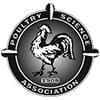Pekin Duck Research Reveals Heritability of Feeding Behaviors - Interpretive Summary
Published: December 14, 2020
By: https://poultryscience.org/
by Sam Shafer
A new study published in Poultry Science® shows that body weight, residual feed intake, and feeding behavior traits are all highly heritable traits in Pekin ducks. The research, led by scientists at China Agricultural University and Beijing Golden Star Inc., may help guide the selection for certain feeding behaviors and further help producers improve feed efficiency in their flocks.
Pekin ducks are the leading breed of duck used for meat around the world. The breed is known for its high body fat ratio, which means producers face the challenge of improving feed efficiency without sacrificing fat deposition. Poultry scientists are working to help producers assess whether selecting certain birds for breeding can affect body weight along with feeding behaviors.
For the new study, the researchers assessed body weight–related traits and feeding behavior in 5,594 Pekin ducks from three to six weeks of age. The ducks were initially selected for high feed efficiency and moderate body weight. At six weeks of age, the ducks were selected for growth rate and fat deposition in the early growth stage. The researchers followed these ducks for three generations, selecting high performers from each generation. The researchers were also able to trace the pedigrees for these ducks back five generations, which added up to 25,120 individuals. This allowed them to connect genetics and feeding behavior and assess whether their selection made a difference.
The scientists found that the estimated heritability of body weight at 3 weeks (0.29) and body weight at 6 weeks (0.48) were relatively high. This means they could be improved by direct phenotypic selection. This finding was consistent with previous studies. The study also shows that heritability of feed conversion ratio (FCR) and residual feed intake (RFI) were 0.29 and 0.32. Overall, the researchers found that the heritability of feeding behavior–related traits were all high. They suggest that selection for high feed efficiency might be achieved by selecting ducks with low-RFI levels, which would have little effect on the increase of body weight.
“We could also conclude that feeding habits can pass on from parents to offspring and significant progress can be obtained through direct selection on the phenotypic value of feeding behavior traits in Pekin ducks,” the scientists write.
The new research opens the door to more poultry studies to link behavior to genetics. In fact, the new study is the first to report genetic parameter estimates about feeding behaviors in ducks based on large datasets, and it provides solid data for further genetic study in ducks.
The full paper, titled “Selection response and genetic parameter estimation of feeding behavior traits in Pekin ducks,” can be found in the March 2020 edition of Poultry Science® and online here.
DOI: 10.1016/j.psj.2020.01.013
Source
https://poultryscience.org/Related topics:
Authors:

Recommend
Comment
Share

Would you like to discuss another topic? Create a new post to engage with experts in the community.



